Calgary Transit GMC Fishbowls – postscript
They’re done. They’re finished. They’re gone. RIP 2014: Calgary Transit Fishbowl buses – so long, and thanks for all the rides. Once the mainstay of the fleet, they have finally run out of time. After all that hard work, after all those millions of kilometres and millions of passengers, it’s ended. They have been cut up for scrap. It’s a bit sad perhaps but then we all have to go sometime.
CTS got thirty plus years out of them. They got their money’s worth. Not bad at all!
If you are a regular reader of this blog, you know doubt have seen that we have a strange fascination with transit buses, old ones in particular. The ones seen in this report are known as GMC New Looks by their manufacturer, but more commonly and affectionately are refereed to as “Fishbowls” by many who know them. They earned this nickname due to the multi-part and multi-angled front windshield which gave a magnified and slightly distorted fishbowl effect when peering out of them.
This bus design dates back to 1959, although Canadian production did not begin until 1961. Calgary Transit’s first order was in 1964 and it was almost twenty years, 1982, before the last was placed. In that time they also bough some used examples, including some built in the US. When the final tally was done, the CTS Fishbowl fleet numbered around 600 buses, almost all bought new! By 2013 I understand several dozen remained in service, used sometimes intermittently and then only at peak times.
The Fishbowl was hands down the most popular bus of its era, not just in Calgary, but for most transit systems across the country. There was not an operator, it seems, who did not roster at least some of these buses. To get an idea of their popularity, over 11,000 were built in Canada (1961-1986) and outside of some US export orders (made after US production ceased in 1977) most were built for use here. This design dominated the market here and transit agencies had a love affair with them.
So well built, many operators kept their Fishbowls in service well into the 2000s. In comparison many competing designs of the same era had long since been retried. In this city they lasted longer then anywhere else in fact and some were seen in service as late as December 2013. By then Calgary was the only city still operating this model. With the arrival of some new buses however, these old warriors have finally been stricken from the roster.
At the beginning, Canadian production centred on the General Motors Diesel Division locomotive plant in London Ontario. Later examples, made after 1980 or so (some conflicting data) were built in Saint-Eustache, Quebec at a new factory established there. This plant later developed the Fishbowl successor, the GMC Classic. It was well received but demand for the older model continued, so for a time the two were made concurrently (1983-1986). That Quebec factory by the way later came under control of Motor Coach Industries (MCI of Greyhound fame) in 1987. In the early 1990s it changed hands again and became NovaBus. They still make transit buses to this day and Calgary has some.
These Fishbowls are known as high floor buses, meaning you have to step up to enter them. Current models have a low floor, which makes getting in and out of them easier, especially so for those with handicaps or of limited mobility, or those carrying packages or pushing strollers. With the Fishbowls gone, the only high floor buses left on the CTS roster are the MCI Classic models (CTS never bought a GMC produced Classic). They are due to be retired by 2015 or so.
We’ve been visiting the bus barns semi-regularly since late last year to check on the status of the Fishbowl fleet. In that time most could be seen parked deep inside the complex and out of camera view. Each time we’d visit over the next few months it was pretty much the same – the fleet could be seen in the back lot languishing away.
Starting March, we noticed some changes. There seemed to be less and less of them in the storage area each time we passed. For the life of us, we could not track down where they were going though. On one visit we even saw a Fishbowl being worked on – or that’s what appears was happening – it was in the front parking area and was running with its engine hood up. Was it being prepped for sale and not scrap? That seems to make sense since if it was destined to be cut up, its running condition would not mater. Did it survive? This bus, #1002, was built in 1979 and was one of thirty seven made to that order.
That month a few Fishbowls got moved closer to the roadway and within easy view. These included #945 from a 1978 order that totalled eighty units. Bus #970 from that same order was also located nearby as was a third unit whose number could not be seen. A forth unidentified bus was also spotted, loaded on a flat deck deep inside the complex.
Due to various obligations we were not able to return to the barns until part way into April. I worried we’d had waited to long and I was right. Damn, not a single Fishbowl was seen. They were gone and as I would soon find out, were sent to a local auto wrecker. Maybe some had yet to be cut up? It’s worth a visit so we quickly headed there. Nothing. Well actually we saw evidence of the buses, but no complete ones. Only a few small bits and pieces, ragged remains and chunks of metal with some CTS paint on them, confirmed that not that long ago they were here. We missed them…again!
Were any of these Fishbowls saved? Maybe that one I saw being worked on? This invites further research and we always love to hear from others if they have anything to add.
While it’s sad to see these buses gone, I am happy that they lasted in service as long as they did. They couldn’t run forever after all. I am not sure every one will miss them – many who rode in them and drove them and worked on them may not be nostalgic like us. No doubt some hated these old, rough and noisy buses. Let’s face it, in 2013 they were anachronisms, throwbacks to another era. Some might say good riddance. I say goodbye.
To see other Calgary Transit themed posts, follow these links…
Calgary Transit then and now – old Shouldice Bridge – John Hextall Bridge.
Calgary Transit then and now – Elbow Drive part 1.
They Live! Calgary Transit GMC Fishbowls in 2013.
If you wish more information on what you’ve seen here, by all means contact us!
Date: March and April, 2014.
Location: Calgary, AB.
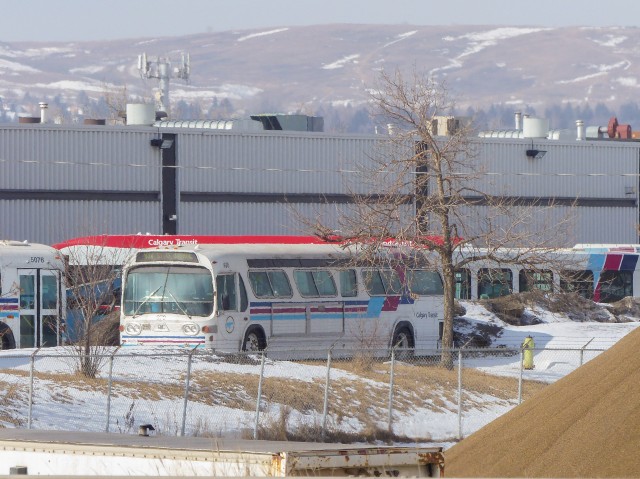
A Calgary Transit Fishbowl sitting outside the bus barns.
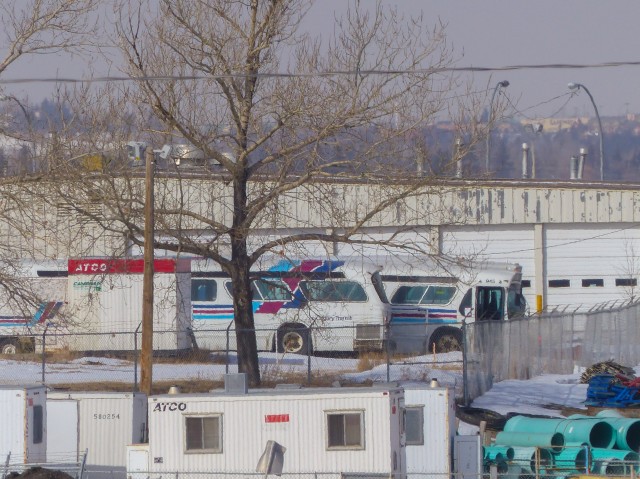
Two more further in back.
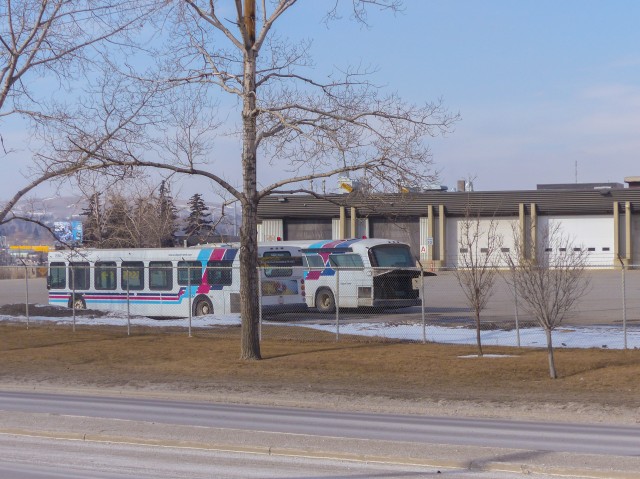
This one looks like it’s being worked on – but why?
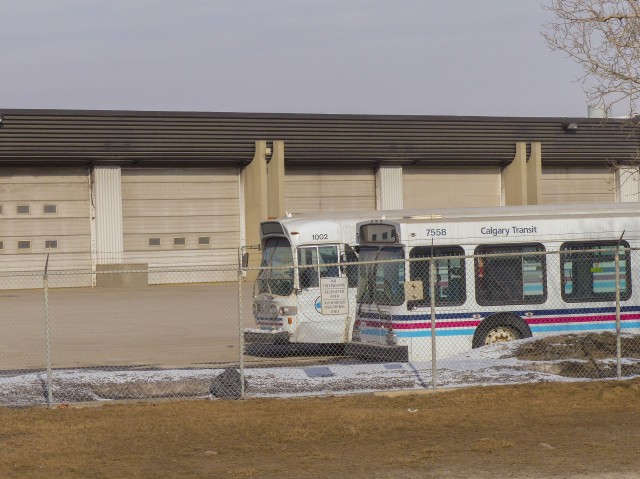
Calgary Transit #1002, the only one of this model seen under power.
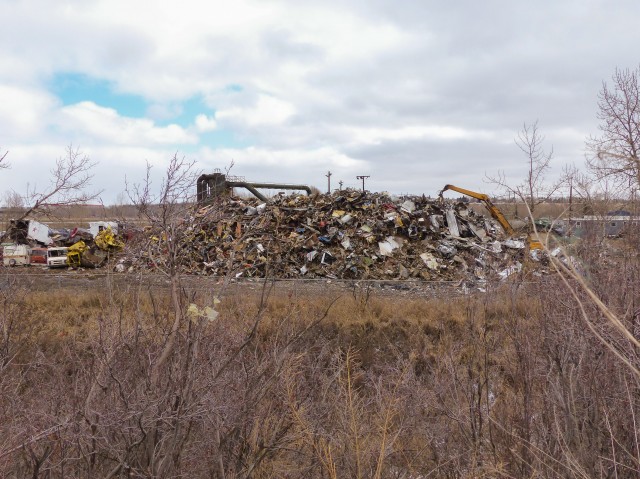
The scrap yard where they were sent.
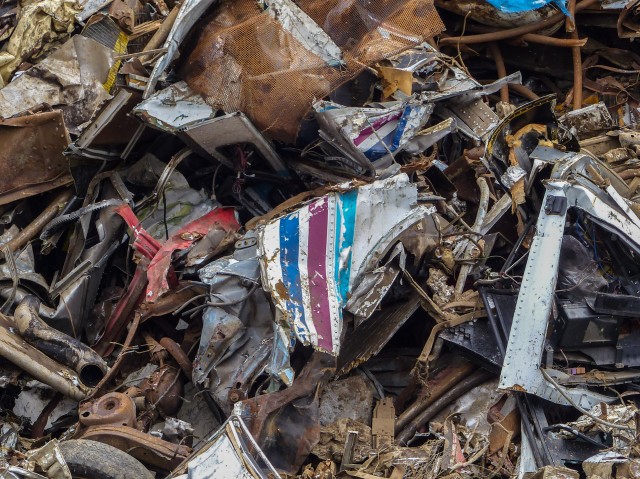
RIP: Calgary Transit Fishbowl buses 2014. So long, and thanks for all the rides.

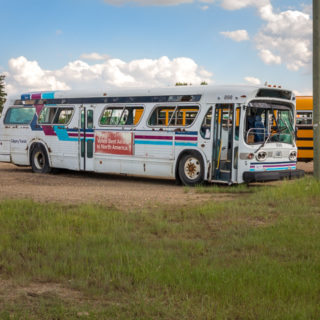
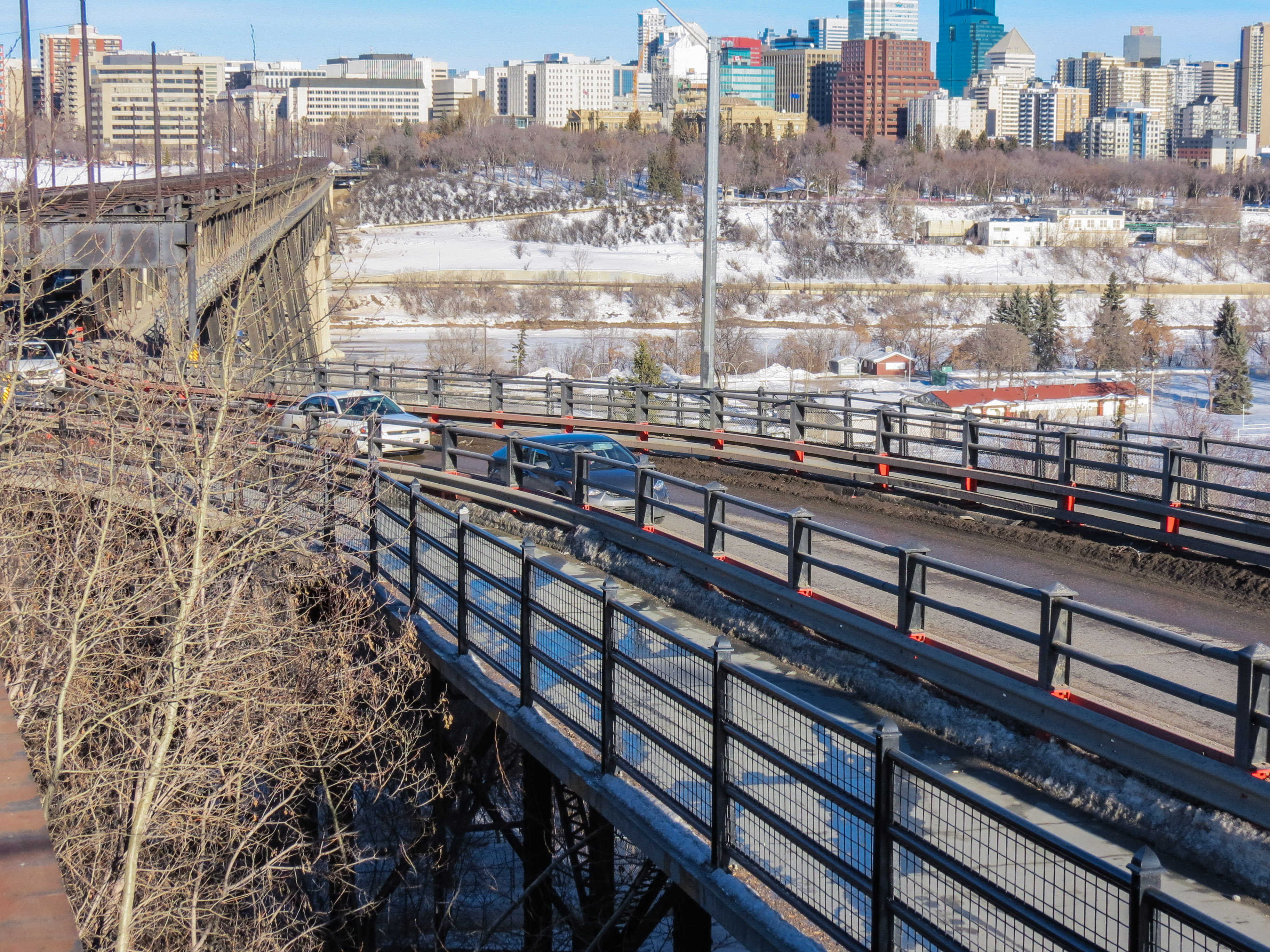
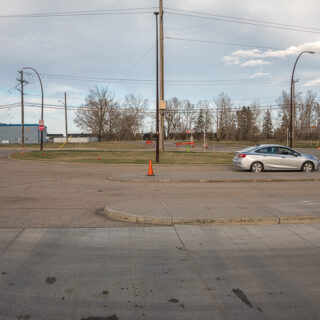
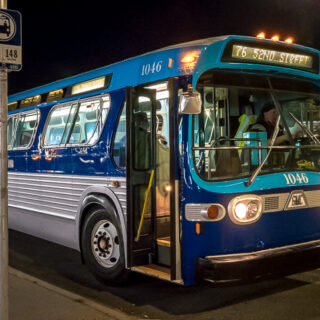
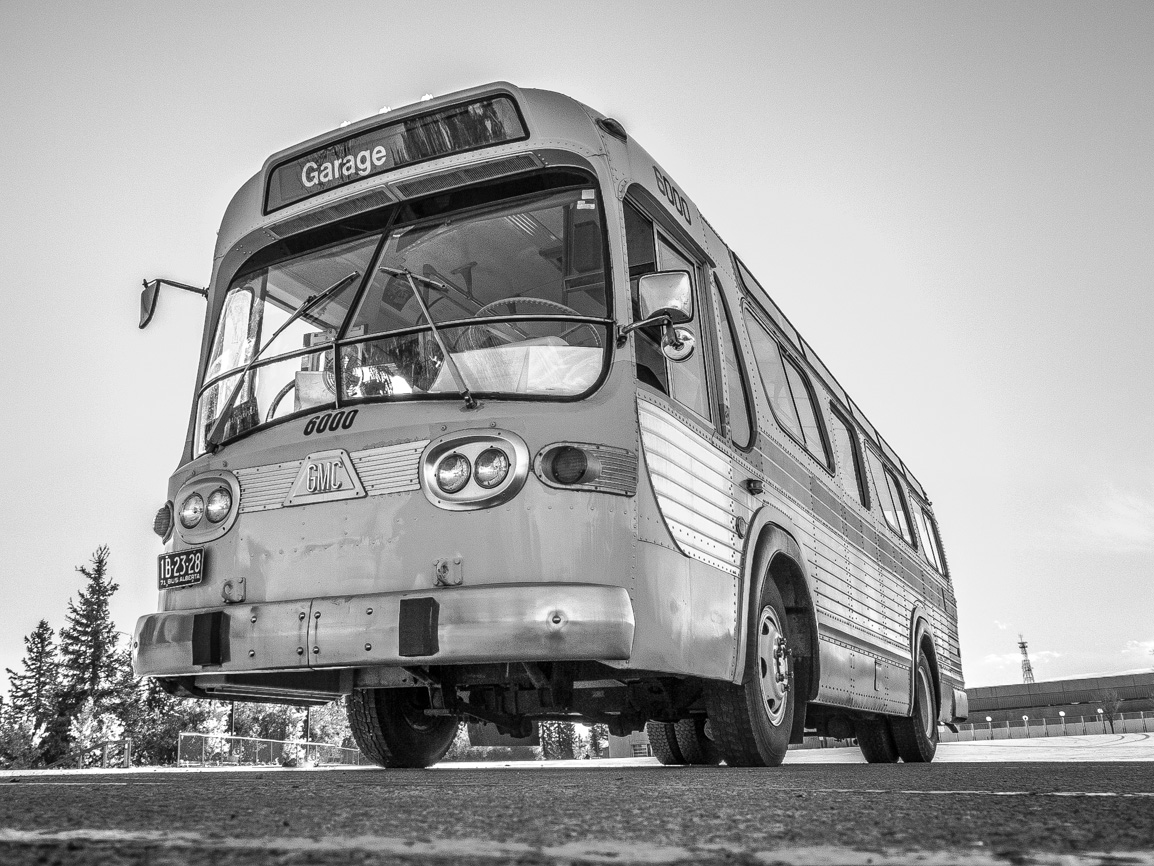
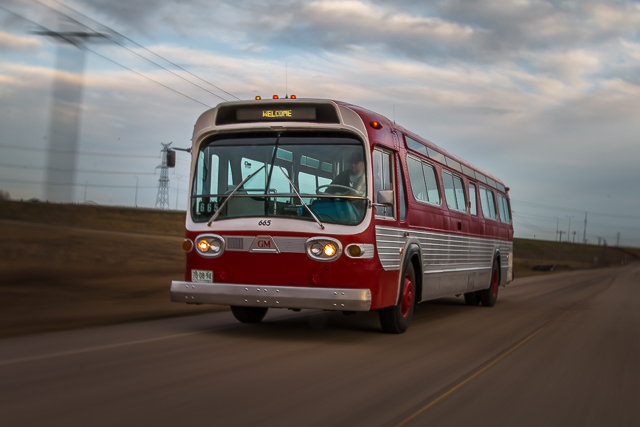
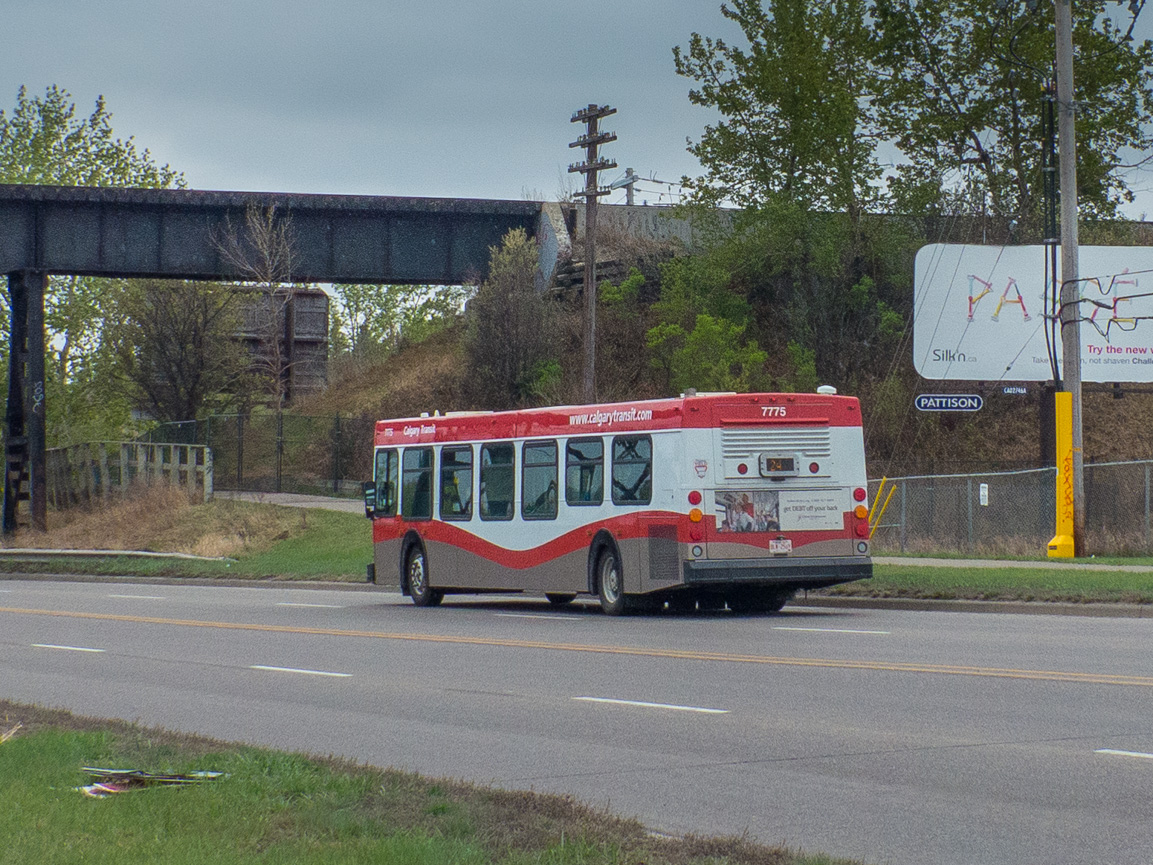
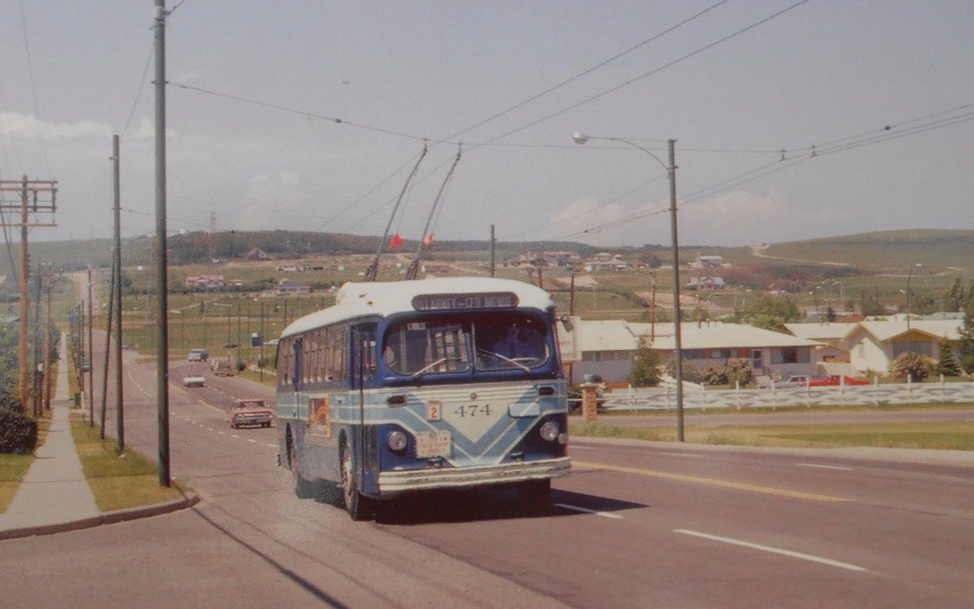
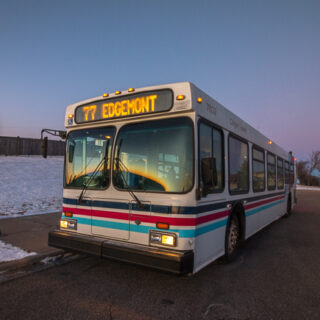
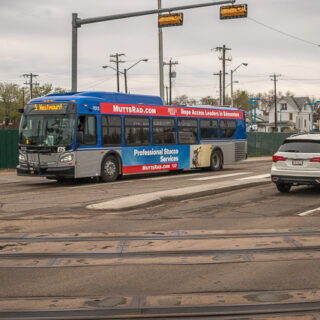
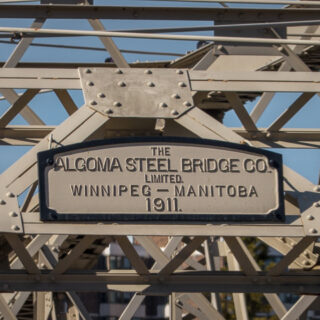
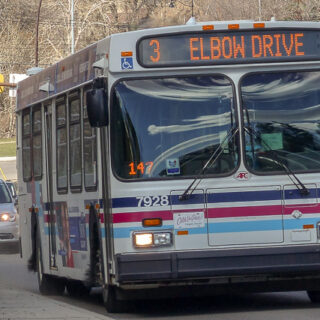
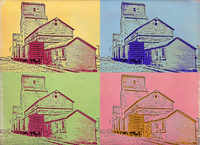






Highly recommended reading: https://cityonline.calgary.ca/Pages/Product.aspx?category=Books&cat=CITYonlineDefault&id=0001-10213-15320-00001-P
Not sure if there are any left for sale, but should be available for reading at CPL.
Cool, I’ll have to check it out.
Glad to see somebody else also has a interest in old transit buses. I don’t know how long your memory goes back, but you may remember the GM “Old Look” buses that Calgary Transit once used, purchased in 1947, these were still in use until some time in the mid to late 70’s. I remember that with a full passenger load, an “Old Look” would struggle to climb up the hill on 14th Street NW between 7th and 14th Avenues. You also might remember some of the other bus models used by Calgary Transit, such as the Twin Coach and Canadian Car and Foundry “Boxcar” buses.
I can think back to about 1977 or thereabouts, so I only recall the Fishbowls (even some of the short ones), and the old Flyers. I just missed the trolley buses and the other oddballs. Thanks for posting!
Sad indeed to see the fishbowls go. Apparently that last blue fishbowl has been retained by CT. Many of these beauties are in private preservation. I have one of the rarest models (of the 44000+ fishbowls made, there were only 510 of the smallest version) – the “baby fishbowl”, which is just under 30 feet long. You can see photos of it on the link above.
I love your little bus! Thanks for sharing.
Awesome, we love your bus. It’s so cute!
To me, those old buses will always define what a city bus should look like.
Indeed, they were iconic. Those buses will be missed by yours truly.
Thankfully when the Para Transit division took over the Southend Garage, OCTranspo kept 4 full lanes of Antique Buses, including 3 Silversides that I know of….Along with various Brills and GM Coaches from the 50’s….Even a Street Car under wraps in one of the Satilite Garages….
Calgary Transit, it seems, has little interest in saving old buses.
You would think they would save one for history now a days. After all they lasted many years.
I think one has been saved…
Research continues on this.
They kept 1046, the only bus still in two-tone blue.
Yes, I heard of that. Hopefully they’ll put it to use.
Sad to see them cut up. :<
Sad indeed.